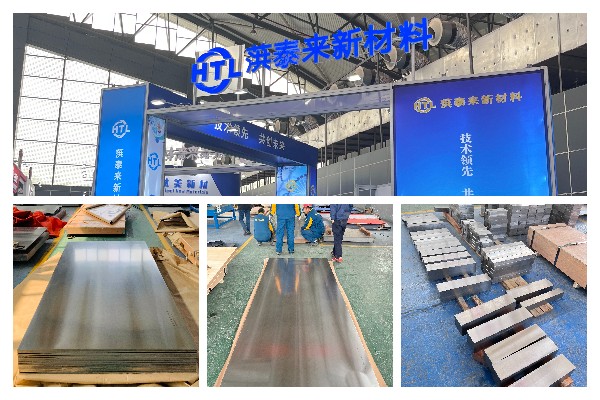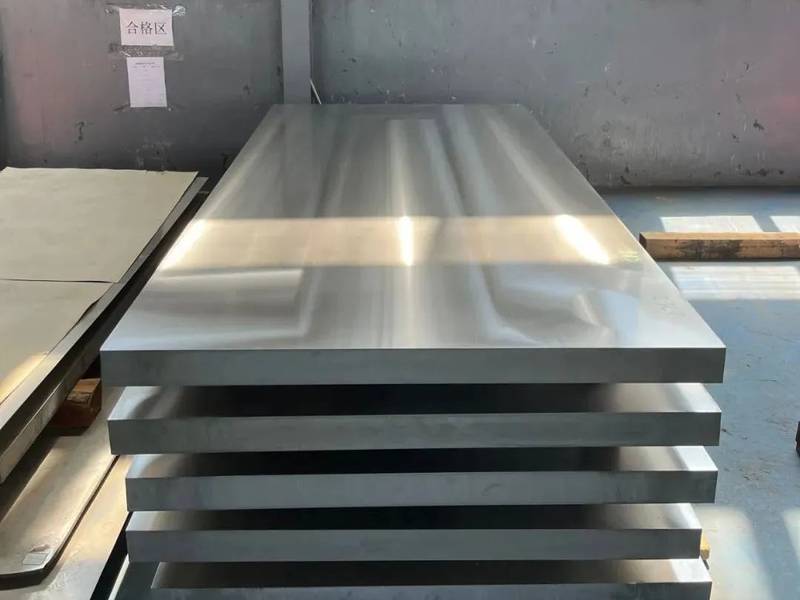Titanium alloy is an alloy composed of titanium as the base metal with the addition of other elements. Titanium exists in two homogenous allotropic forms: below 882°C, it is in a close-packed hexagonal α-titanium structure, while above 882°C, it transforms into a body-centered cubic β-titanium structure.
When selecting titanium alloy sheets, several factors should be taken into consideration. Here are some methods for the selection process:
- Application requirements: Determine the specific application requirements for the titanium alloy sheets. Consider factors such as mechanical strength, corrosion resistance, temperature resistance, and compatibility with the operating environment.
- Alloy composition: Different titanium alloy compositions offer varying properties and characteristics. Evaluate the alloy composition options available and choose the one that best aligns with the desired performance requirements.
- Strength requirements: Identify the required strength level for the application. Titanium alloy sheets are available in low, medium, and high strength categories. Select the appropriate strength level based on the structural demands of the application.
- Cost considerations: Evaluate the cost-effectiveness of the titanium alloy sheets. Consider factors such as material and manufacturing costs, as well as the overall lifecycle cost of the product.
- Manufacturing process: Understand the manufacturing process capabilities and limitations. Some titanium alloys may require specialized processing techniques or have specific restrictions. Ensure that the chosen titanium alloy sheet can be successfully manufactured and meets the desired specifications.
- Supplier reputation: Consider the reputation and reliability of the titanium alloy sheet supplier. Look for established manufacturers with a track record of delivering high-quality products and providing excellent customer support.

By carefully considering these factors, it is possible to select the most suitable titanium alloy sheet for a given application.
Based on their influence on phase transition temperature, alloying elements in titanium alloys can be classified into three categories:
- α-stabilizing elements: These elements stabilize the α phase and increase the phase transition temperature. Examples include aluminum, carbon, oxygen, and nitrogen. Among them, aluminum is the primary alloying element in titanium alloys, as it significantly improves the strength at both room and high temperatures, reduces density, and increases elastic modulus.
- β-stabilizing elements: These elements stabilize the β phase and lower the phase transition temperature. They can be further categorized into isostructural and eutectoid types. Examples of isostructural elements used in titanium alloys are molybdenum, niobium, vanadium, etc., while eutectoid elements include chromium, manganese, copper, iron, silicon, etc.
- Neutral elements: These elements have little influence on the phase transition temperature. Examples include zirconium, tin, etc.

Oxygen, nitrogen, carbon, and hydrogen are the main impurities in titanium alloys. Oxygen and nitrogen have significant solubility in the α phase, which can strengthen the titanium alloy but reduce its ductility. It is typically specified that the content of oxygen and nitrogen in titanium should be kept below 0.15-0.2% and 0.04-0.05%, respectively. Hydrogen has limited solubility in the α phase, and an excessive amount of dissolved hydrogen in titanium alloys can cause embrittlement due to the formation of hydrides. The hydrogen content in titanium alloys is usually controlled below 0.015%. The dissolution of hydrogen in titanium is reversible, and it can be removed through vacuum annealing.